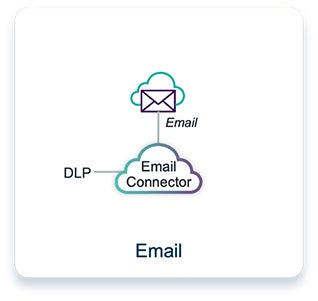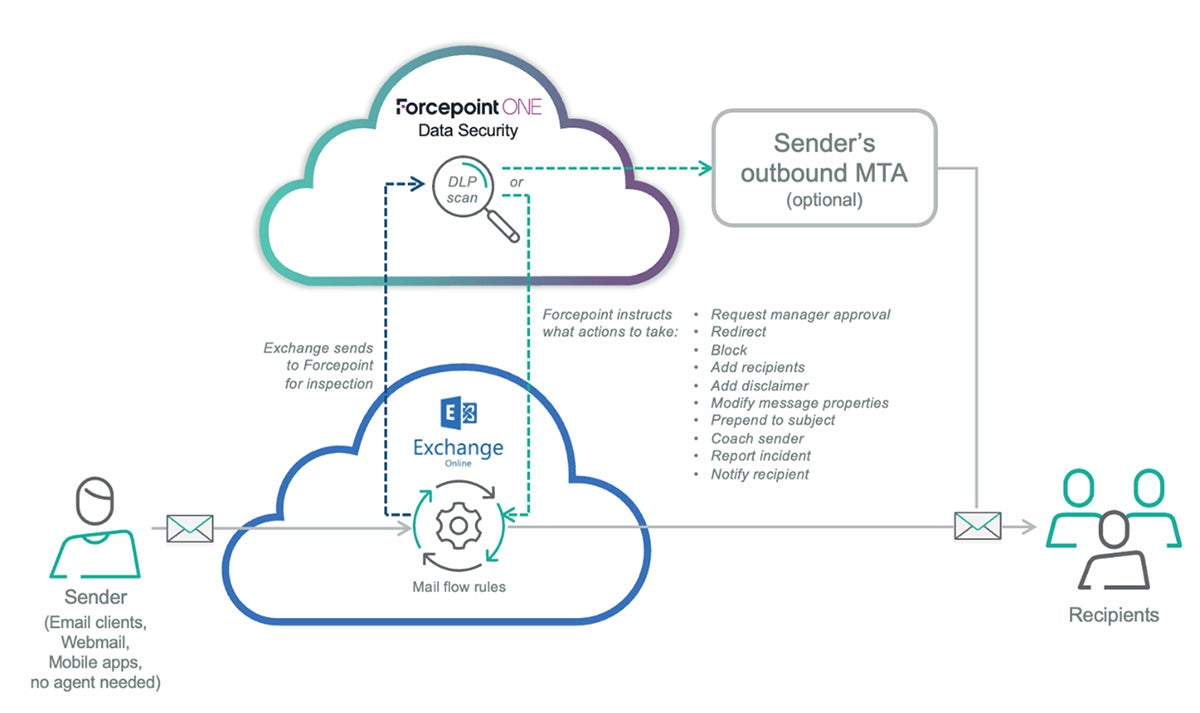Data Security Everywhere: Protegendo Dados em Emails
Parte #3 da nossa série de blogs sobre Data Security Everywhere
0 minutos de leitura

Tuan Nguyen
"A mudança é a única constante", uma observação atemporal do filósofo grego Heráclito, ressoa especialmente no cenário digital moderno de hoje. Conforme a força de trabalho navega de forma completamente remota, a transição de volta ao escritório ou adotando um modo híbrido, as empresas estão se adaptando ao desafio de garantir que as pessoas possam trabalhar de qualquer lugar com dados que estão em todos os lugares.
Fechando a lacuna crítica de segurança de email
Em meio a esse ambiente dinâmico, o email continua sendo o canal mais prevalente para violações de dados. De acordo com o Verizon’s 2023 Data Breach Investigations Report, mais de 50% de todas as violações começam a partir do email. Seja devido a ações inadvertidas ou intenções maliciosas, o email é onde a perda de dados frequentemente começa. Dado que o email é uma ferramenta indispensável para todas as empresas, o conteúdo de email não autorizado representa um risco substancial. Isso destaca a importância de garantir efetivamente este canal de comunicação com um conjunto consistente de políticas que podem ser aplicadas em todos os canais de acesso.

A Forcepoint possui uma solução líder do setor, DLP for Email,, para garantir que informações sensíveis permaneçam protegidas, em conformidade e sob controle. Vamos explorar como essa poderosa ferramenta pode ajudar as organizações a evitar a exfiltração não autorizada de dados e garantir conformidade por meio do canal de email.
Simplificando a segurança de email - Sua primeira linha de defesa
À medida que empresas e agências governamentais redefinem suas operações, proteger o email é visto como a primeira linha de defesa contra violações de dados. Como a Forrster afirmou em seu recente relatório Forrester Wave™: Enterprise Email Security, do segundo trimestre de 2023:
But how can organizations address the challenges of securing sensitive emails with the modern hybrid and remote workforce? That’s where features to simplify email security delivered by Forcepoint DLP for Email come in:
Extend industry-leading DLP capabilities
Forcepoint's industry best DLP seamlessly integrates with leading cloud email platforms. With over 1,700 built-in templates and data classifiers, organizations can tailor policies to their unique needs across 150 countries. Whether it's Microsoft Exchange, Gmail for Business or other email providers, Forcepoint DLP for Email ensures organizations can enforce consistent data security.
No agent required
Forcepoint DLP for Email works without requiring any agents, making it easy to deploy and manage. It seamlessly integrates with your email platform, providing enhanced capabilities like quarantine, encryption and manager approval all natively within the email workflow. Unlike endpoint-only solutions, inspection occurs at the network level extending these enhanced capabilities to BYOD devices – smartphones, laptops, Chromebooks and tablets – ensuring consistent security across all endpoints, managed or unmanaged.
Unified management
Forcepoint DLP for Email delivers unified management and enforcement of company data security policies across many different channels, including the different SSE gateways (cloud, web, endpoint). This holistic approach is designed to provide single-pane management of policies and incidents, streamlining security operations and enhancing visibility across the entire network.
Easy deployment with native workflow integration
Organizations can configure and publish policies within minutes. Native workflow features (Encryption, Quarantine, Manager Approval and more) enhance efficiency and provide users with a native Microsoft Exchange experience without the need for a separate console or different portal login.
Complements inbound threat protection
Forcepoint DLP for Email complements existing inbound threat protection solutions. By preventing unauthorized data exfiltration, it increases your organization’s security posture and defenses against both external and internal threats, creating a robust defense-in-depth strategy against evolving cyber threats.
Stay tuned for more on our strategic collaboration with Abnormal Security, where together we deliver advanced protection against today’s most sophisticated email attacks.
See how Forcepoint DLP for Email works in this short demo:
Forcepoint DLP for Email leverages our industry-leading Data Loss Prevention (DLP) technology to prevent data theft and loss across an organization’s largest threat vector for data breaches. Unified management of incidents and data security policies empowers organizations to protect their critical information and ensures that email communications remain secure, compliant and efficient.

With Forcepoint DLP for Email, you're taking a crucial step towards a safer digital environment where organizations can expect business outcomes such as:
- Increase Productivity – Enable people to work with sensitive data without the risk of losing control of it
- Cut Costs – Eliminate the need for additional consoles, duplicate policies and specialized agents
- Reduce Risk – Stop the #1 way that data is stolen
- Streamline Compliance – Provide consistent visibility and control over data leaving the organization
Don't miss out on the next chapter in our Data Security Everywhere series, which will explore the security benefits of Risk-Adaptive Protection.

Tuan Nguyen
Leia mais artigos de Tuan NguyenTuan Nguyen atua como Gerente de Marketing de Produto na Forcepoint, com foco em soluções de segurança web e na nuvem para aplicações SASE. Com mais de 10 anos de experiência na indústria em segurança na nuvem, redes de data centers e desenvolvimento web, tanto em grandes empresas quanto em startups, ele é apaixonado em trazer soluções empresariais ao mercado e moldar um cenário digital mais seguro para as organizações.
- Securing Data in Email
No Artigo
 Securing Data in EmailLearn More
Securing Data in EmailLearn More
X-Labs
Receba insights, análises e notícias em sua caixa de entrada

Ao Ponto
Cibersegurança
Um podcast que cobre as últimas tendências e tópicos no mundo da cibersegurança
Ouça Agora








